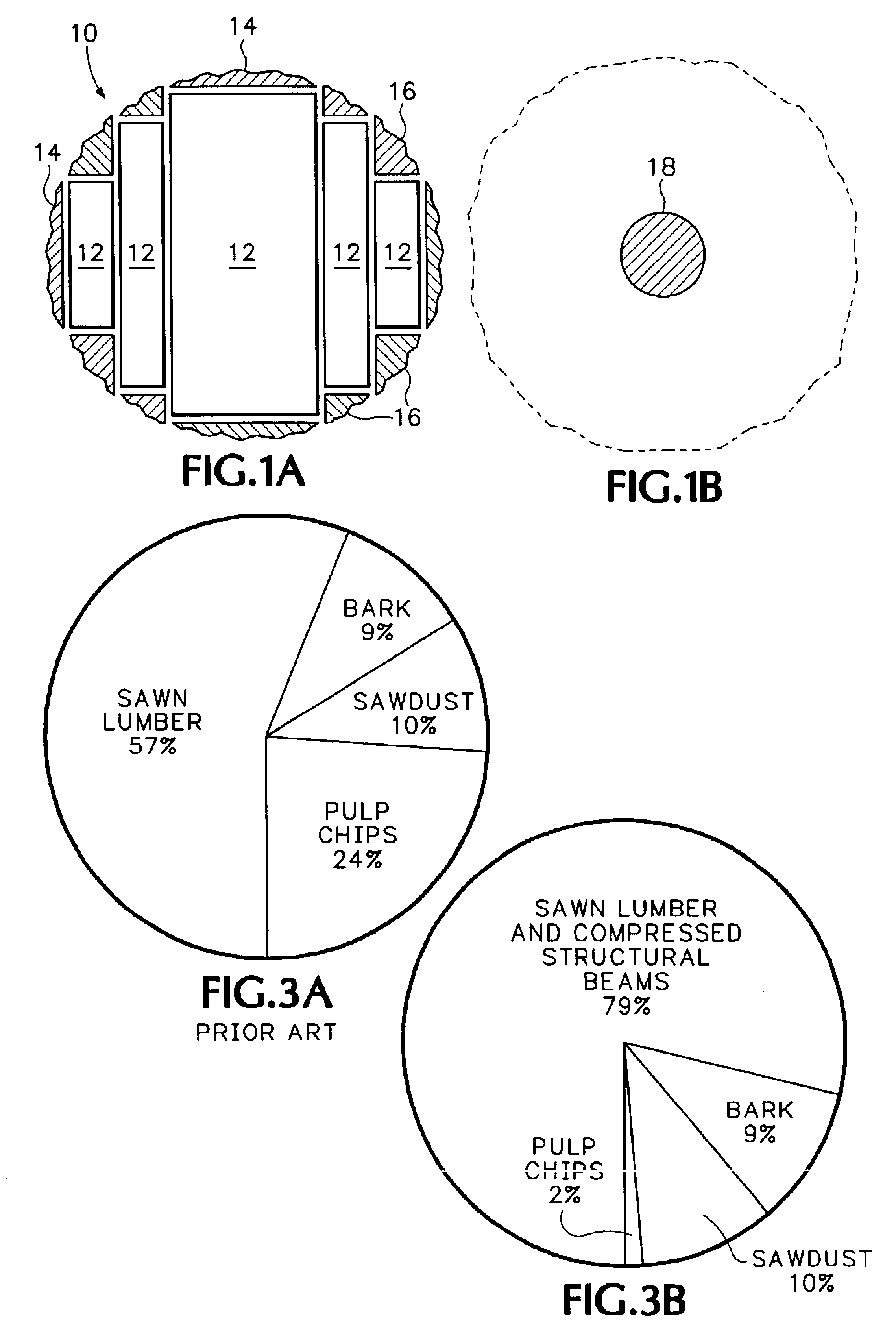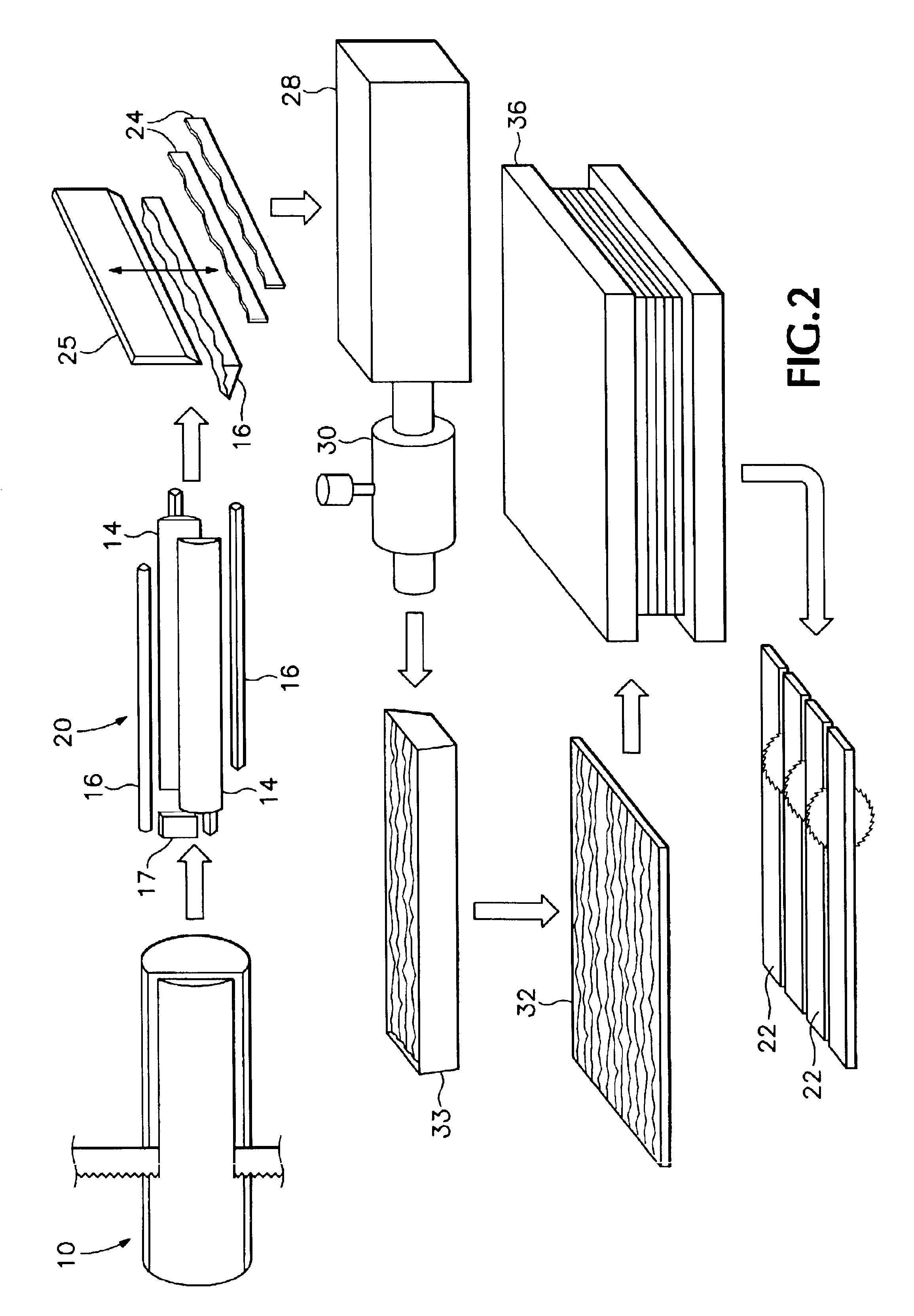Compressed wood waste structural I-beam
a technology of compressed wood waste and structural beams, which is applied in the direction of girders, wood veneer joining, manufacturing tools, etc., can solve the problems of veneer waste, insufficient diameter of round wood, and inability to cut into commercial lumber or other types of beams
- Summary
- Abstract
- Description
- Claims
- Application Information
AI Technical Summary
Problems solved by technology
Method used
Image
Examples
Embodiment Construction
[0019]As used in the description and claims hereof, the following terms shall have the following meanings:[0020]1. “Wood waste” means solid wood material, other than sawdust, generally unsuitable for producing solid commercial dimension lumber or conventional laminated veneer products.[0021]2. “Milled wood waste” means a type of wood waste comprising any one of the following types: edgings; slabs; end trimmings; veneer peeler cores; and a combination of two or more of these.[0022]3. “Round wood waste” means a type of wood waste in the form of portions of trees whose diameters at breast height at the time of harvesting of the tree are less than 17 cm.[0023]4. “Veneer waste” means a type of wood waste in the form of veneer pieces generally unsuitable for producing plywood or laminated veneer lumber.[0024]5. “Structural wood beam” means any compressed and bonded composite wood beam, post, or plank, either of rectangular cross section such as 2×4″, 2×6″, 4×4″, 4×6″, etc., or of contoure...
PUM
| Property | Measurement | Unit |
|---|---|---|
| Length | aaaaa | aaaaa |
| Thickness | aaaaa | aaaaa |
| Width | aaaaa | aaaaa |
Abstract
Description
Claims
Application Information
 Login to View More
Login to View More - R&D
- Intellectual Property
- Life Sciences
- Materials
- Tech Scout
- Unparalleled Data Quality
- Higher Quality Content
- 60% Fewer Hallucinations
Browse by: Latest US Patents, China's latest patents, Technical Efficacy Thesaurus, Application Domain, Technology Topic, Popular Technical Reports.
© 2025 PatSnap. All rights reserved.Legal|Privacy policy|Modern Slavery Act Transparency Statement|Sitemap|About US| Contact US: help@patsnap.com



